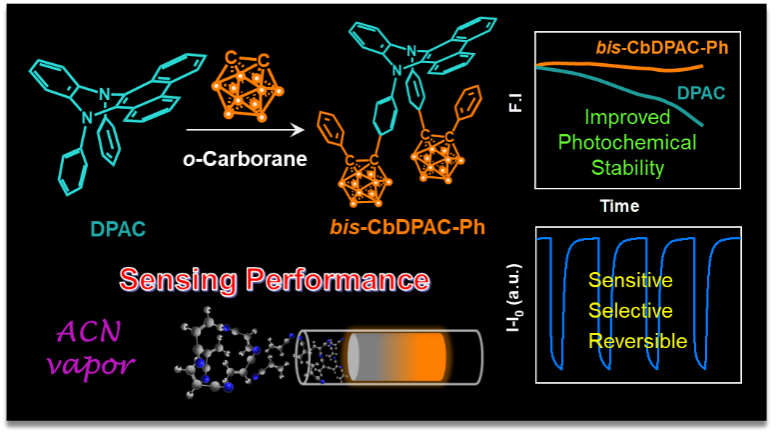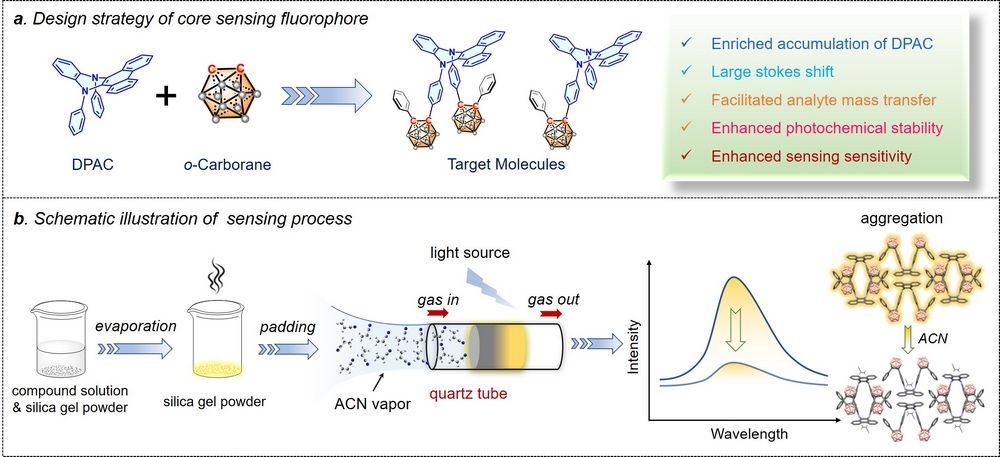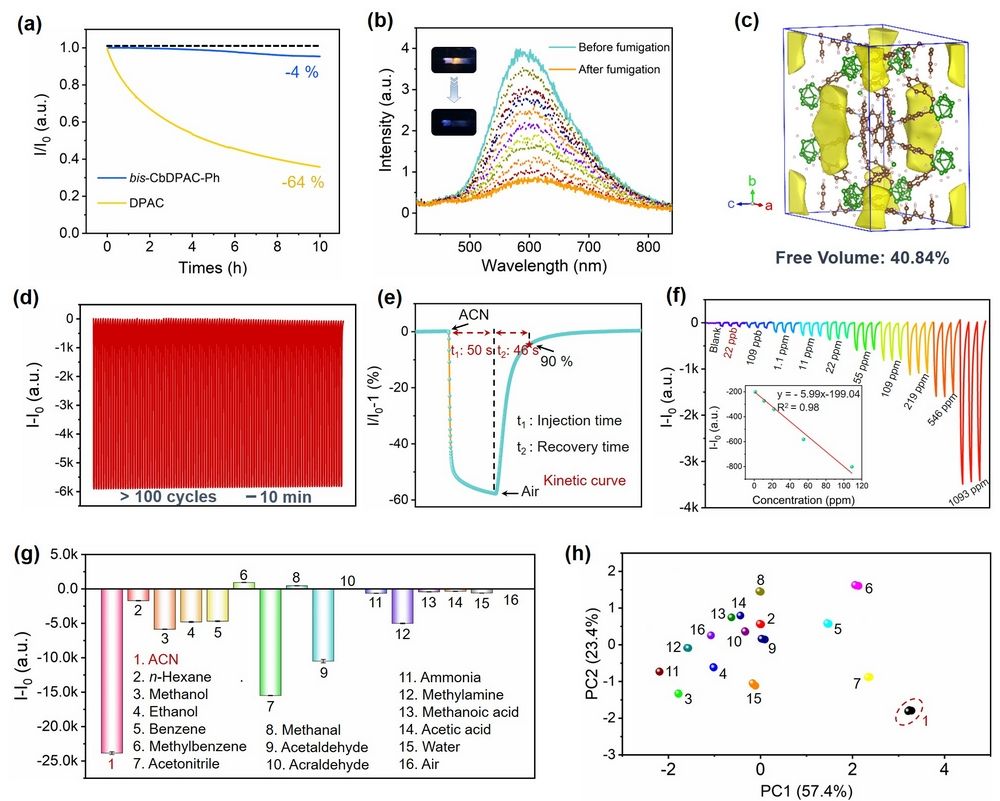
Yangtao Shao, Rongrong Huang, Yan Luo, Hexi Wei, Haonan Peng, Yu Fang. Sensor Actuator B-Chem. 2024, 418, 136285.

Film-based fluorescence sensing is internationally recognized as a new generation of ultra-sensitive detection technology for trace substances. It has unique advantages and great potential applications in public safety, food quality supervision, and early diagnosis of diseases. The core of fluorescent film sensors (FFSs) is the fluorescence sensing unit, among which low molecular weight fluorescent units have attracted widespread attention due to their precise chemical structures and flexible molecular configurations. Therefore, the innovative design of sensing materials is pivotal for the development of high-performance fluorescence film sensors (FFSs).

Figure 1. (a) Design strategy and associated properties of the target molecule. (b) Schematic representation of ACN vapor detection using a portable fluorescence tubular sensor. A fluorescent-sensitive tubular sensor was fabricated using an o-carborane-functionalized DPAC derivative (bis-CbDPAC-Ph). The fluorescence of bis-CbDPAC-Ph in the tubular sensor is significantly quenched upon exposure to gaseous ACN.

Figure 2. The gas sensing performance of the bis-CbDPAC-Ph-based tubular sensor. (a) Photochemical stability of the sensor constructed from DPAC and bis-CbDPAC-Ph. (b) Fluorescence emission intensity changes of the bis-CbDPAC-Ph-based tubular sensor at 590 nm (λex = 370 nm) as a function of exposure time to gaseous ACN. (c) Calculated free volume of bis-CbDPAC-Ph in its crystalline state. Visualization was performed using the Multiwfn and VESTA programs, with yellow representing the pore space in the crystal lattice (grid spacing: 0.25 Å, iso-value: 0.50). (d) Reversibility and stability of the tubular sensor towards ACN vapor over 100 sensing cycles. (e) Detailed analysis of the response and recovery behavior of the tubular sensor to ACN vapor. (f) Sensor response to varying concentrations of ACN vapor. The inset shows the plot of quenching efficiency against concentrations. (g) Sensor responses to ACN and other potential interfering gases. (h) Two-dimensional PCA score plot for discriminating the tested chemicals.
In this work, two new DPAC derivatives, CbDPAC-Ph and bis-CbDPAC-Ph, were synthesized by introducing o-carborane to the para-positions of the DPAC moiety (Figure 1a). Experimental results demonstrate that in the solid state, these compounds exhibit typical aggregation-induced emission (AIE) and large Stokes shifts. Furthermore, compared to DPAC, the introduction of o-carborane not only significantly enhances their photochemical stability, but also fosters a rich network of intermolecular interactions that generates novel emission centers, thereby broadening the Stokes shift. The combination of two non-planar structures notably improves the porosity of the molecular packings in the solid state. Additionally, the contact with volatile organic compounds (VOCs) promotes the relaxation of the excited-state conformation of DPAC and the rotation of o-carborane, increasing non-radiative decays and thereby enhancing sensing sensitivity (Figure 2). On this basis, a conceptual fluorescent tube sensor was developed and successfully used for airborne acrylonitrile (ACN) detection (Figure 1b).
First Author: Shao Yangtao, doctoral candidate, Shaanxi Normal University
Correspondence Authors: Prof. Fang Yu, Prof. Peng Haonan and Dr. Huang Rongrong, Shaanxi Normal University
Full Text Link: https://doi.org/10.1016/j.snb.2024.136285